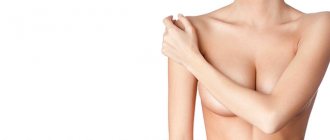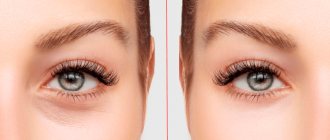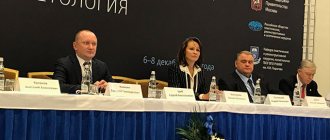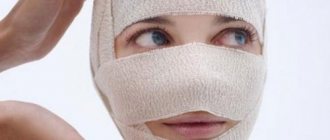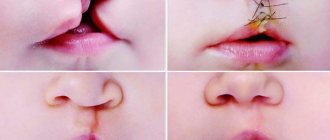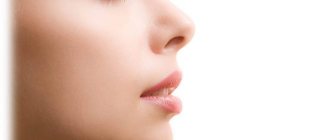Eye rejuvenation from Max-Adam Scherer
— How to avoid the “round” eye effect after eyelid surgery?
Dr. Scherer: There is a category of patients with weakened canthus tone; during eyelid correction, they need to tighten the corner of the eyes (canthopexy). If this is not done, you can get eyelid inversion to one degree or another, and, as a result, a symptom of operated “round” eyes. I use minimally invasive strengthening of the canthal ligament by suturing it from the inside. I never cut it, but only strengthen it in this way, due to which the canthal ligament contracts and pulls the corner of the eye upward. This maneuver gives the eyes a slight almond shape, thus avoiding the effect of a “round” eye after surgery.
— Do you perform plastic surgery of the orbicularis oculi muscle during correction?
Dr. Scherer: Let me clarify that the classic method of blepharoplasty involves resection of the muscle. I follow the latest trends in plastic surgery of the eyelids - preservation of the orbicularis oculi muscle
, I rarely use resection. Also, I do not always remove all fat packets, but use their movement and subsequent fixation to eliminate skeletonization of the orbital edge. To treat hernias of the upper and lower eyelids, I often use the transconjunctival approach.
— They say that the transconjunctival approach for eyelid surgery is not suitable for everyone...
Dr. Scherer: Traditionally, the transconjunctival approach is used in cases where there is no excess skin of the lower eyelids. However, I use this approach in most cases as it is less invasive. At the same time, I carefully remove excess skin using the pinch technique (pinch - pinch off in English)
. Hernias are removed from the inside without affecting the orbicularis oculi muscle. If necessary, canthopexy is performed. This approach to eyelid correction significantly reduces the rehabilitation period.
— Do you use lipofilling for eyelid surgery?
Dr. Scherer: The lipofilling technique was improved many years ago by Sydney Coleman, so lipofilling in its classical form has long been out of date due to its short-lived effect and complications. Today I am using a new and effective way of working with adipose tissue - fatgrafting.
– restoration of missing adipose tissue. During the procedure, not large fragments of adipose tissue, which were previously used in lipofilling, are introduced into the designated areas, but small grafts obtained in a special way, due to which the survival rate is up to 80%, which naturally affects the duration of the correction result.
—Are you redistributing fat tissue?
Dr. Scherer: In some cases, I redistribute infraorbital hernias to correct pronounced tear troughs, and in other cases, I remove and use fatgrafting. Everything is always very individual.
—Where do you get fat from?
Dr. Scherer: I focus on the wishes of the patients. Basically, everyone wants to remove excess from the so-called fat “traps”. These are accumulations of fat cells that can form in different parts of the body and face. Most often it is the stomach or knees. However, this procedure does not require a lot of material.
Fat grafting necessarily accompanies oculoplasty of the upper and lower eyelids, because replenishment of adipose tissue is very rejuvenating, eliminating age-related contouring of the bony edge of the orbit.
— Do you add plasma (PRP) to the fat for better engraftment?
Dr. Scherer: I used to enrich fat grafts with PRP, but not today. Since the process of isolating PRP uses an anticoagulant: either citrate or heparin. The latter do not shorten rehabilitation, and sometimes even cause additional swelling, hematomas and bleeding after surgery. From my practice, the duration of the result after fat grafting is proportional to the correct gentle technique of collecting, processing and introducing fat grafts than to the addition of plasma (PRP).
MUST-lifting. Max-Adam Scherer
In April of this year, the 15th World Congress of Aesthetic and Anti-Aging Medicine took place in Monaco. We met with the founder of the Clinic of High Aesthetic Medicine, plastic surgeon and dermatocosmetologist, Max-Adam Scherer, who presented his original MUST-lifting
.
Max-Adam, are you both a plastic surgeon and a dermatocosmetologist?
— Yes, I completed two residencies: in dermatovenerology at Moscow State Medical University named after I.M. Sechenov and plastic surgery at the Russian Scientific Center for Surgery named after B.V. Petrovsky. Even while receiving my medical education, I clearly realized that the main direction in my future work would be the fight against age-related changes. During that period, minimally invasive techniques in surgery began to gain momentum in developed countries. Immediately after finishing my first residency in dermatology and cosmetology, I moved on to studying plastic surgery, which in the future allowed me to create my own approach, which I called “invisible touch” based on the intersection of minimally invasive cosmetology and plastic surgery. Based on my clinical practice, I can confidently assure that only in the symbiosis of these two areas of aesthetic medicine are the most natural rejuvenation results achieved.
What plastic surgeries do you perform?
As I already said, my main direction is anti-age in the broad sense:
from anti-aging surgeries and minimally invasive procedures, to cosmeceutical programs in the fight against skin aging. Therefore, I mainly work with the face and neck area. At the core of my practice, I use a set of techniques, including my own, aimed at solving age-related problems. Thanks to modern technologies, most of them are minimally invasive, which significantly reduces risks, rehabilitation time, and also minimizes the visibility of surgical intervention.
Facial rejuvenation includes many different techniques. Which of them do you use in your practice?
In my work, I am used to relying on the wishes of my patients, and they are often the most demanding people who have high demands on the quality of the services provided. They value their time very much; comfort and safety are important to them. My patients need special treatment, in a private environment in the clinic. They definitely do not want to be suspected by others of carrying out any interventions and have noticeable scars. At the same time, the chosen correction method or operation must preserve or even emphasize their individuality.
Traditional surgical approaches to facelifts involve interventions with fairly long incisions in front of and behind the ear, and, of course, they leave scars of exactly the same size. The approaches of all methods known today are identical - the specialist needs to gain access to the SMAS - the membrane that deforms with age - in order to tighten it. That is why there is a need for such an extended skin incision. And if owners of long hair can hide traces of surgery under their hairstyle, then with a short haircut, for example, a man’s haircut, noticeable scars pose a special problem. Another important point is that none of the patients wants or can afford a recovery period of several months, and also expose themselves to the risk associated with a “deep” SMAS detachment. Therefore, a few years ago I thought about how to make a facelift an operation that I want to do.
But not all facial problems can be solved through small accesses; there are very “neglected” faces. . .
As a rule, patients who come to my clinic are in harmony with their age. For them, years are a direct reflection of life experience and individuality, so they do not need obvious transformations in appearance. The goal is to remove signs of fatigue associated with aging, remain sexually attractive, be in good shape, look younger, but at the same time not look “operated” in the eyes of others. That is, their desires are extremely clear - to look decent and attractive at their age.
If we speak sincerely, then, of course, there is a category of patients who no longer fall into the category of “timely applicants.” Many of those who have suddenly lost weight have suffered a stressful situation or a serious illness, but even in such cases there are solutions.
What is special about your method of facial rejuvenation?
In short, MUST-lifting is a full-fledged facelift through a small incision in the temples with an absolutely natural rejuvenation effect and quick rehabilitation. This is the lifting that everyone dreams of doing, the mandatory lifting, the one that absolutely needs to be done (from the English must - must).
Thanks to the simultaneous use of two full-fledged techniques that I have adapted: tightening the muscular aponeurotic layer with stitching layers (SMAS plication) and lifting with elastic threads-implants, a powerful tightening of the contour of the face and neck is ensured while preserving the natural contours.
There are a number of nuances: during the operation, the muscular aponeurotic layer (SMAS) is carefully plicated - a kind of “assembly” is assembled using an atraumatic conductor, so damage to important anatomical structures is completely excluded. The “assemblies” of soft tissue obtained in this way are fixed with elastic Spring Thread® implant threads, which provide natural support for the oval of the face and neck for many years. During the operation, tissue distribution is carried out along the natural tension lines of the face, which avoids the “flat face” effect and deformation of the shape of the lips and nostrils, which sometimes occur in previous generation techniques.
As a rule, the operation does not leave behind hematomas, and the patient goes home on the day of the operation, which is a great advantage compared to a traditional circular lift, which usually requires a daily stay in the clinic. However, as well as the minimum recovery time - after 2-4 weeks, patients return to a full-fledged lifestyle.
Have you given a name to this method?
The method is called MUST-lifting, where the abbreviation MUST stands for minimal undermining suspension technique
translated from English as a facelift operation with a minimal peeling effect using a supporting technique with elastic
Spring Thread® implant threads
.
Was this technique completely developed by you?
European colleagues use a similar technique to lift the cheeks and cheekbones, but I slightly modified it and used it to correct the shape of the face and neck.
Do the Spring Trade threads you use not dissolve?
Spring Trade are flexible elastic thread implants. With this method, there is no point in using absorbable threads, otherwise the effect of the tightening will disappear after a few months. The advantageous difference between these threads and conventional suture material is their unique ability to stretch and at the same time powerful fixation in soft tissues, that is, providing shock absorption in facial expressions and head movements.
How long does the effect last after applying your MUST-lifting modification?
The rejuvenating effect lasts about 10-15 years.
How many packs of Spring Trade threads are needed to carry out such a correction?
It all depends on the indications and variation of the operation. A maximum of 2 packages can be used in the neck lift option along with the neck.
What is the price for such rejuvenation in your clinic?
Cost of MUST lifting: face - 177,000 rubles, face + neck - 295,000 rubles. Without the cost of thread implants.
How long does rehabilitation take?
On average, rehabilitation lasts 2-3 weeks. In rare cases, the period may increase to 1 month.
Will the scar still be visible?
During the operation, I make a small zigzag incision in the scalp of the temporal region, not reaching the tragus; accordingly, the tragus and earlobe remain in place, and their deformation does not occur. Since the tension is taken over by the threads, the skin heals without tension, and a cosmetic scar is formed, which is almost invisible.
What anesthesia do you use for this correction?
The operation is recommended to be performed under sedation. A 24-hour hospital stay after a facelift is not required.
Thanks for the conversation, doctor!
For additional information and individual consultation on the MUST lifting operation, please contact the Clinic of High Aesthetic Medicine at the address: Moscow, Bolshoi Karetny Lane 24, building 2, Tsvetnoy Boulevard metro station, tel.: 8 (495) 150-69-96
drscherer.ru
